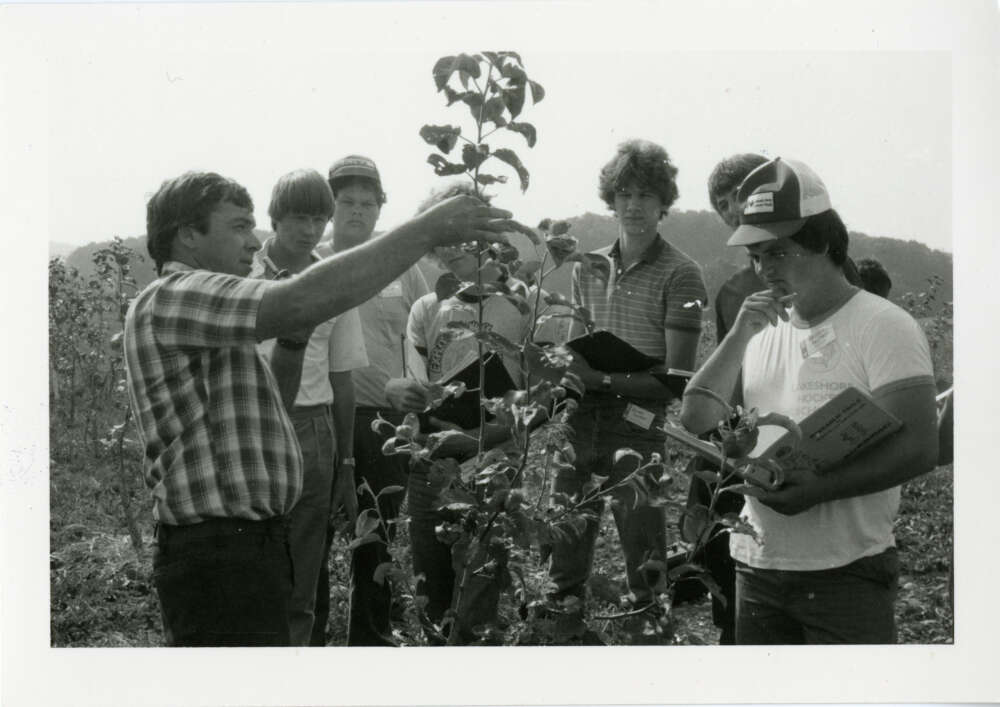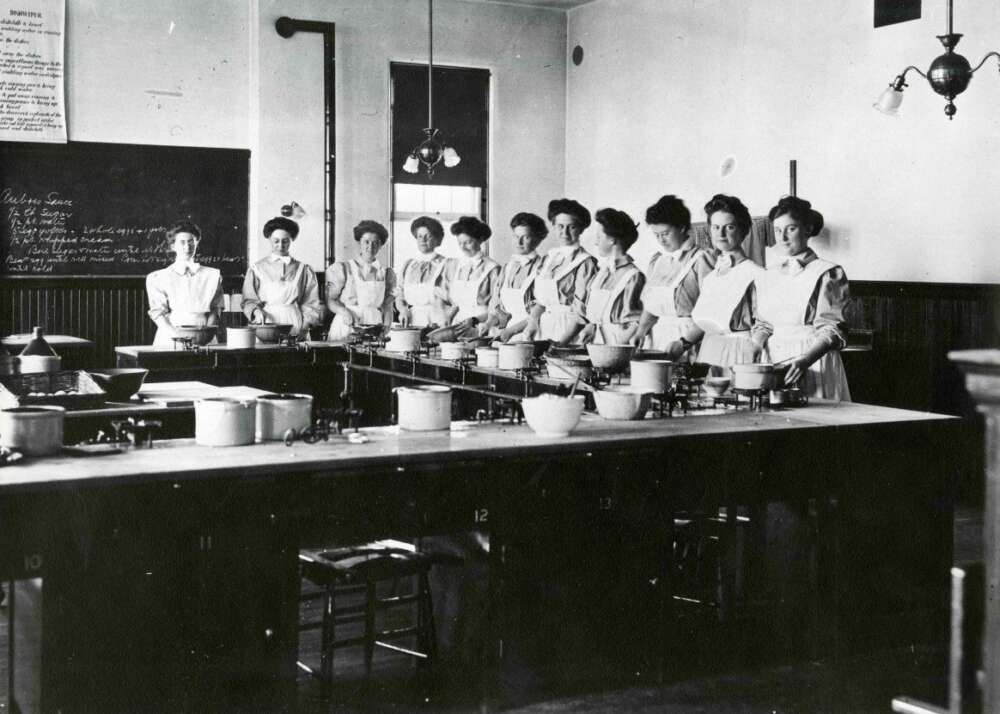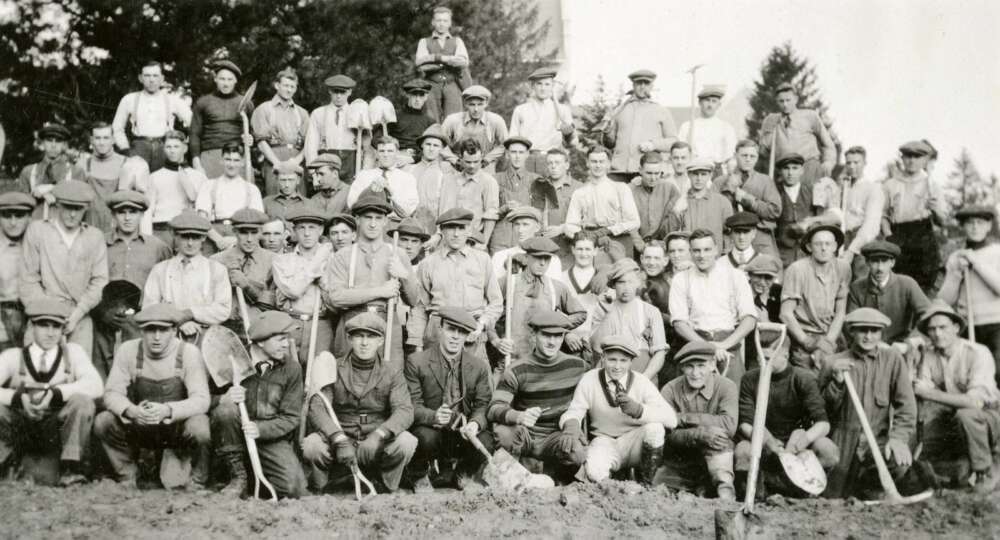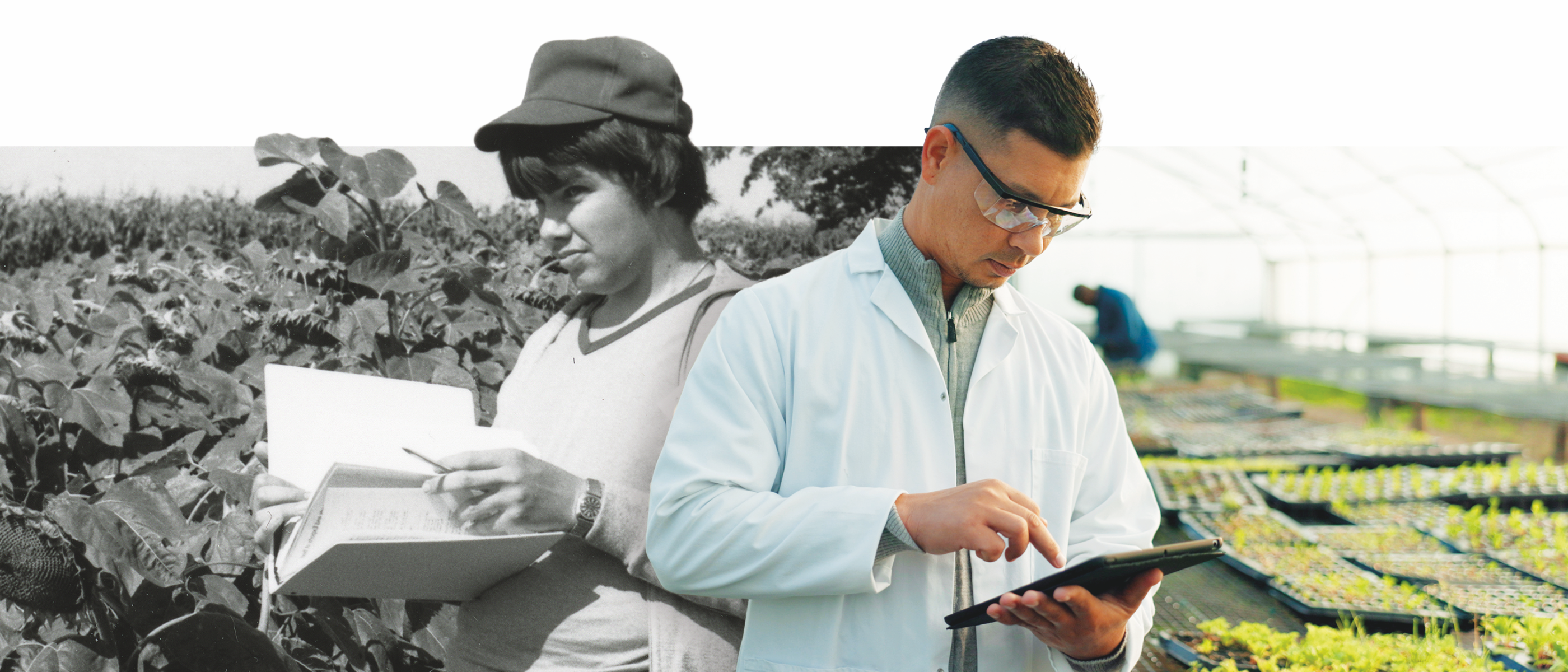The Ontario Agricultural College (OAC), one of the University of Guelph’s three founding colleges, celebrates 150 years of history, having first opened its doors in May 1874.
Today, OAC stands as a global leader in research and education in food, agriculture, communities and the environment, fulfilling its original ambition to become a world-class institution of higher learning.
From May until the end of the year, the OAC will celebrate its 150-year history with a range of events, projects and activities that reflect its achievements and vision for the future.
A full list of events can be found here. They include history tours through campus, Food Day Canada celebrations and a capstone celebration during Alumni Reunion Weekend in June. The OAC community – alumni, faculty, staff, students and industry partners – is invited to reconnect with one another and share memories throughout the next 12 months of celebrations.
“The entire University of Guelph community is thrilled to celebrate this significant milestone in our history,” says Dr. Charlotte Yates, U of G president and vice-chancellor. “OAC has a proud and rich legacy of developing leaders and cultivating innovation in the global agri-food sector.”
With its first graduating class of only 28 diploma students, held on a 550-acre farm purchased by the province, OAC has grown to over 3,300 students across two campuses, Guelph and Ridgetown, and now leverages the network of research centres owned by the Agricultural Research Institute of Ontario (ARIO) that span the province.



‘A proud and rich legacy’
Throughout its history, OAC has always been a leader in innovation, research and teaching to support the agri-food sector as Dr. John Cranfield, acting dean of OAC reflects:
“Today, the influence of OAC extends far beyond agriculture, helping to bolster the backbone of our global agri-food system,” he says. “OAC is a beacon of support for those dedicated to nurturing the land, sustaining our communities, and safeguarding the environment for future generations.”
“With strategic partnerships across various sectors, including government and organizations championing agriculture, food, the environment and rural communities, OAC is poised to continue its important mission.”
Originally named the Ontario School of Agriculture and Experimental Farm, OAC changed its name in 1880 to better reflect its purpose and ambitions.
Moreton Lodge, 1900
Amidst a world transforming through rapid scientific discoveries, the Ontario government intended the college to secure its place on the world stage. In 1874, it was one of the first schools in Canada to integrate scientific research into farming practices, helping to modernize agriculture across the country.
This commitment continues today as the Ontario Agri-Food Innovation Alliance, the collaboration between the Ontario Ministry of Agriculture, Food and Rural Affairs (OMAFRA) and U of G. Through the Alliance, the province invests in research and innovation that contribute to the success of the province’s agri-food sector and promotes rural economic development, including those marked with an asterisk (*) below.




Milestones along the way
In 150 years, OAC has seen the world change in fundamental ways, and the stories throughout its history tell us how it has become the powerhouse of innovation education it is today:
- In 1903, the establishment of the Macdonald Institute on the OAC campus marked a significant entry point for women into the community and higher education. At first providing only domestic science education, women at the Macdonald Institute gained greater access to a range of programs and roles in the agricultural sector as societal attitudes shifted.
- Over two world wars, OAC professors taught military leaders who were feeding soldiers how to make efficient use of war rations.
- In 1946, OAC welcomed its first international students from India who enrolled to learn the latest innovations in animal husbandry, beekeeping and soil biology.
- In 1964, OAC became a founding college of U of G, marking a new phase of growth that would help it match international standards.
- In 1997, OAC began offering programs and conducting research at two locations, as Ridgetown Campus officially became part of the University.

OAC innovations through history
Championing numerous advancements, OAC has influenced Canadian agriculture and global practices for more than a century. Here are just a few highlights (click on each to learn more):
Yukon Gold Potatoes
Now a household name across Canada and the U.S., the Yukon Gold potato is the most recognized plant variety developed through U of G’s breeding programs.
In 1980, Gary Johnston of Agriculture and Agri-Food Canada crossbred a typical white North American potato with a wild, Peruvian “golden egg” to create the yellow-fleshed Yukon Gold.
The Yukon Gold has remained a favourite among professional and home chefs, and its genetics have gone on to be used to create dozens of new varieties.
Guelph Millennium Asparagus*
Before the Guelph Millennium’s introduction more than 20 years ago, growers struggled to keep fields producing high-quality asparagus every year.
The Millennium was bred to perform well in colder climates, to adapt to multiple soil types and to thrive in new regions.
Now the industry standard for Ontario farmers accounting for more than 80 percent of the asparagus acreage, the variety has also spread to many parts of the northeastern U.S., northern Europe and even the Pacific Northwest.
Omega-3 Eggs*
In the 1990s, poultry scientist Dr. Steve Leeson focused on fortifying commonly eaten foods with nutrients. His discovery with eggs came at a time when they had fallen out of public favour due to their high cholesterol content.
This breakthrough involved altering the diets of hens to include high amounts of crushed flaxseed. The result was eggs significantly richer in omega-3 fatty acids, which are crucial for brain development and heart activity. This innovation was needed to meet consumer demands for functional foods that support health beyond basic nutrition, supporting eggs’ improvement in the market.
Ice Cream Course
Formed in 1885, the Department of Dairying (now the Department of Food Science) paved the path to the three-month-long OAC Dairy School for dairy operators.
Its two-week short course on ice cream was a real hit, and by 1914, there was enough interest from commercial ice cream manufacturers to start offering the course as a standalone program.
Ice Cream Technology is now the longest-running course at the U of G and the only one of its kind in Canada. It ultimately brought about the industrialization of ice cream development and, over its history, it has trained more than 3,000 people globally.
Bachelor of Indigenous Environmental Science and Practice
The Chippewas of Nawash Unceded First Nation approached the University to create an environmental and resource management program that would train students to support Indigenous communities in ethical and meaningful ways. OAC then introduced Canada’s first undergraduate degree weaving Indigenous knowledge with environmental science, in 2021.
Today, with learnings from First Nations, Inuit and Métis Elders and knowledge holders, the four-year interdisciplinary Bachelor of Indigenous Environmental Science and Practice features land-based instruction and participation in discussion circles and ceremony.
Canadian Research Institute for Food Safety
Since 2002, the Canadian Research Institute for Food Safety (CRIFS) has fostered connections among researchers, the food industry, consumer groups and regulatory agencies to bolster food safety. It provides scientific and technical support to companies that need to conduct food safety and quality assessments.
Along with collaborations that benefit both the industry and consumers, CRIFS is on a mission to train the next generation of food scientists and increase food safety for the entire planet.
Soils at Guelph
Launched in 2018 with a major donation from citizen activists with a passion for soil care and conservation, Soils at Guelph was later amplified by OMAFRA through the Ontario Agri-Food Innovation Alliance.
The initiative shares soil research and knowledge with farmers, the public and the government to allow more accessibility to practices designed to improve soil health and biodiversity.
Much like a doctor using medical tests to diagnose a person’s health, current researchers are exploring soil technologies to improve decision-making about soil health and sustainability.
Controlled Environment Systems Research Facility (CESRF)
Scientists in CESRF conduct research towards the goal of growing plants and crops in space and other closed environments. In 2022, researchers sent barley seeds to space that were able to withstand the harsh conditions of space.
The research conducted at the facility has aided the development of a wide range of applications in terrestrial agri-food sectors including the phytopharmaceutical sector.
Regional and Rural Broadband (R2B2)
Many people in rural, agriculture-based areas do not have access to a reliable internet service, or they pay significantly higher amounts for service – a significant problem in an era of hybrid work.
Since 2006, rural development professor Dr. Helen Hambly has led Canada’s research project Regional and Rural Broadband (R2B2), working with municipalities across southwestern Ontario to inform wider investment in broadband in underserved areas, to increase connectivity and foster a stronger economy.
Farmland Annual Survey*
Since 2016, Dr. Brady Deaton has led an annual survey open to all farmers in Ontario who own or rent farmland to better understand farmland values and rental rates.
Once all data are collected, the results are made publicly available. This allows for market transparency, fosters effective investment decisions and financial planning and eventually, will allow the team to compare current prices with historic trends.
*These initiatives are supported by the Ontario Agri-Food Innovation Alliance, the collaboration between the Ontario Ministry of Agriculture, Food and Rural Affairs (OMAFRA) and U of G.

